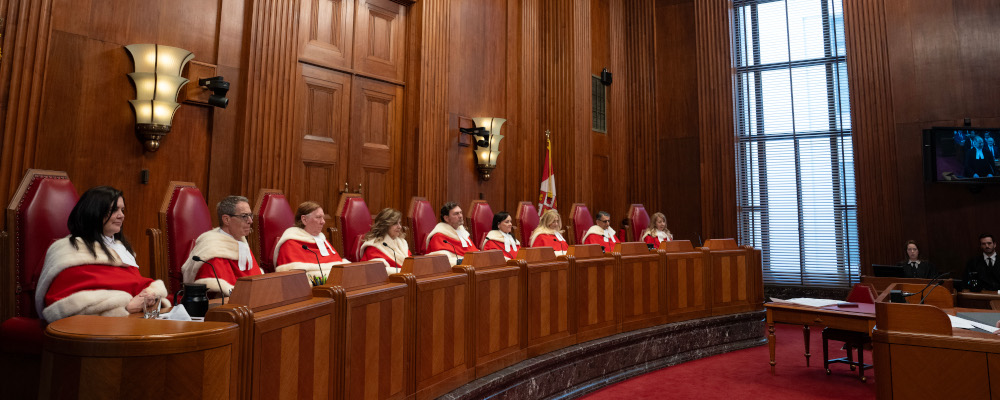In last month’s Supreme Court of Canada decision in R. v. Kruk, the Court used the term “a person with a vagina” rather than “woman.”R. v. Kruk, 2024 SCC 7 [109] rev’g 2022 BCCA 18 aff’g 2020 BCSC 1480. Contrary to some overwrought comments on social media, the Court was not saying that the preferred term for “woman” is “a person with a vagina.” The use of the phrase nonetheless gives real cause for concern as to whether the Court will be able to fairly adjudicate the cases on trans issues that are sure to come before it.
The main issue in the case was a technical but important point of evidence law. Please bear with some legal background, including with regard to the particular case. Sexual assault cases often turn on the credibility of the accused and complainant, as the crime is typically committed in private and there is often no independent corroborating evidence. In assessing the evidence, a trial judge must necessarily rely on their common sense about human behaviour. But sometimes common sense is not sensible at all; trial judges once relied on the myth that a victim of sexual assault would report the assault immediately and would discount the evidence of a victim who did not do so. The issue in Kruk was how to strike the right balance between common sense and expert evidence in the context of sexual assault.
The accused had been charged with sexually assaulting the complainant while she was blacked out from extreme intoxication. The trial judge convicted, relying in part on the complainant’s evidence that when she woke up, “she felt his penis inside her and she knew what she was feeling.” The trial judge remarked that “[i]t is extremely unlikely that a woman would be mistaken about that feeling.”2020 BCSC 1480 [68]. Focusing on this sentence, the British Columbia Court of Appeal held that the trial judge had erred in law by relying on possibly mistaken common sense about what “any” woman would feel, even when highly intoxicated, when the true question was what this particular complainant had felt. The Court of Appeal therefore set aside the conviction and ordered a new trial.
The Supreme Court unanimously held that the trial judge was entitled to rely on the complainant’s evidence and restored the conviction, with Justice Martin writing for the majority. Justice Rowe wrote a concurring decision, with a separate analysis, agreeing with the result.

The majority decision was almost entirely business as usual for the Supreme Court in a criminal law case: a dispassionate analysis of a technical evidentiary issue applied to disturbing facts. The contentious statement was a single phrase in the Court’s summary of the law: “Where a person with a vagina testifies credibly and with certainty that they felt penile vaginal penetration, a trial judge must be entitled to conclude that they are unlikely to be mistaken.”R. v. Kruk, 2024 SCC 7 [109]. In context, it is abundantly clear that the Court was not suggesting that the preferred term for a woman is “a person with a vagina.” The Court referred repeatedly to “woman” and “women” throughout its decision and discussed at length myths and stereotypes relating to “women.” The only use of the contentious phrase was in that single sentence. The Court never referred to the complainant herself as “a person with a vagina”: the contentious sentence was a general statement of law, not a statement about the complainant in this case.
The Court did say that the trial judge’s use of the words “a woman” was unfortunate, but in context is clear that the word “a” was unfortunate, not the word “woman.” The Court of Appeal has seized on the phrase “a woman” to criticize the trial judge for making unsupported assumptions about all complainants and the Supreme Court spent several paragraphs pointing out that, read in context, the trial judge’s reference to “a woman” was a conclusion about the complainant specifically. By saying the trial judge’s use of the term “a woman” was “unfortunate,” the Supreme Court was trying to soften the blow by providing an excuse for the Court of Appeal’s error.
With all that said, there is still a puzzle. Why did the Court refer to “a person with a vagina” instead of simply “a woman”? The answer seems to be that it is precisely because the statement was a general statement of law and not a statement about the complainant specifically. The Court evidently wanted to indicate that such evidence should be accepted not only when a woman testifies that she felt penile vaginal penetration, but also when a man with a vagina so testifies. In other words, the Court is acknowledging that trans men are men, and by implication, that trans women are women.
The view that trans women are women is politically controversial and legally unsettled. It is also a matter that may well come before the Court. For instance, many of the governing bodies in international sports have implemented policies that biological men cannot compete in the women’s category if they have gone through male puberty.See UCI (cycling); World Athletics (track and field); World Aquatics. If Canadian sports bodies follow suit, it is very likely that there will be litigation on the question of whether prohibiting trans women from competing in the women’s category would constitute unlawful discrimination on the basis of gender identity under the Canadian Human Rights Act.
Litigation on similar questions is already ongoing in the United States.Here and here. Most Canadian jurisdictions allow people to change the sex indicated on the official documentation, such as a driver’s licence or passport, but the legal effect of such a change is unclear, as we do not have any legislation equivalent to the U.K. Gender Recognition Act which provides that when gender recognition certificate is issued pursuant to that Act, the person’s gender becomes the acquired gender.Gender Recognition Act 2004 (UK) s. 9
The Court must have known that this statement would be controversial. No one who takes even a casual interest in public affairs could fail to have noticed the controversy. Why then did the Court comment on this issue, even indirectly? It was not necessary for legal clarity. None of the parties in the case were trans-identified. The phrase “woman” was used throughout the case in every other context at every level of court. None of the eight parties who appeared before the Court raised the issue in their submissions.Which are available on the Court’s website, here and here. In this context, if the Court had used the word “woman” instead of “a person with a vagina,” the lower courts would undoubtedly have understood that the same rule would apply to the evidence of a man with a vagina.

Now, it might be said that given the controversy, it would be advisable to acknowledge the existence of trans men even though it was strictly unnecessary to the decision. But this could have been done while leaving open the question of whether trans men are men in fact and in law, for example by saying “The same rule of course applies to trans men.”
Using the term “a person with a vagina” without acknowledging the controversy implies that there is no controversy. The Court is signaling that, in its view, the notion that trans men are men is as uncontroversial as saying that the sun rises in the east. This means that the Court has signaled that it has pre-judged a controversial legal issue that is likely to come before it. Now, it is certainly true that this statement is obiter dicta, and so would not be binding in any case the Court might hear dealing with trans issues. And the remark does not necessarily imply that the Court has made up its mind as a matter of law. It would be possible for a judge to hold the view that trans women are women while being open to the possibility that they are not women in law for the purpose of competitive sports.
But the fact that the Court has not strictly bound itself to hold that trans men are men, and trans women are women, is not the point. Our trust in the courts requires confidence that the court will approach any case that comes before it with a mind open to legal arguments and factual evidence. In this case, the Court went out of its way to insert a legally and politically controversial statement into the decision when it was completely unnecessary to do so. That necessarily undermines our confidence in the Court’s willingness to adjudicate this issue with an open mind when it inevitably comes before the Court.
It has become increasingly common for companies and institutions to take a public position on politically charged issues. It is no coincidence that polls show that trust in all major institutions is declining. We might have hoped that the Supreme Court of Canada would remain a last bastion of impartiality that would retain the trust of Canadians. The Kruk decision suggests that hope might be in vain.
Recommended for You

Laura David: Red pill, blue pill: Google has made its opening salvo in the AI-news war. What’s Canadian media’s next move?

The Notebook by Theo Argitis: Mark Carney’s first major tests

The Weekly Wrap: Trudeau left Canada in terrible fiscal shape—and now Carney’s on clean-up duty

Ben Woodfinden: Lament for an ‘elbows up’ nation



